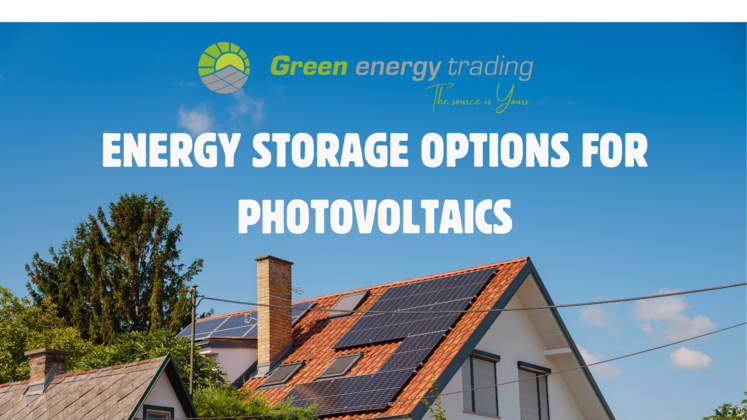Energy storage options for photovoltaics
 8. 2. 2025
8. 2. 2025
What to do with excess energy from photovoltaic panels, or conversely, what to do in cases when the photovoltaic system does not produce enough electricity to meet household consumption?
In the case of a system (on-grid or hybrid), excess electricity can end up in the public grid, or in the event of a shortage, we can draw the required electricity directly from the grid. Another option for handling excess electricity from a photovoltaic system is direct energy storage in battery accumulators, or indirect conversion of electricity into heat in a hot water storage tank.
Battery Accumulators
If the electricity produced by the photovoltaic system exceeds the current consumption, it is advisable to store that energy.
One method of directly storing electricity is to store it in a battery accumulator. The capacity of the accumulator is the key indicator of how much energy can be stored when needed.
How does it work? Photovoltaic panels are never connected directly to the accumulators but always through so-called semiconductor chargers (charge controllers). These ensure that the accumulator is charged optimally under all required parameters, thereby guaranteeing maximum lifespan for the accumulators. Nowadays, a wide range of accumulators and charge controllers with various parameters and qualities are available on the market. Choosing the right equipment will help optimize the lifespan of all devices and reduce maintenance costs.
Accumulators provide direct current (DC) voltage, typically with an output voltage level of 12 or 24 volts.
If a household has a separate 12V or 24V wiring system installed, it is possible to power appliances directly from the battery.
If such a system is not present in the house, this direct current voltage can be converted into standard alternating voltage of 230V (400V) using so-called inverters, which enable us to power all standard household appliances through the existing electrical installation.
Advantages
Maximum utilization of generated electricity–surplus energy from photovoltaic panels does not end up in the public electrical grid but is stored in battery accumulators.
Disadvantages
Limited lifespan of accumulators (5 to 15 years)–their lifespan mainly depends on the type of accumulator used, the type of charging regulator, and the climatic conditions in which the accumulator operates–high ambient temperatures shorten the lifespan. Decrease in battery capacity depending on their age.
Thermal storage
Another form of energy storage is indirect storage of electricity in the form of thermal energy in so-called thermal storage units.
Surplus electrical energy that cannot be consumed immediately at home is automatically redirected to the storage unit, where it is converted into thermal energy via an electric resistance coil and stored in the form of hot water within the storage unit.
Conversely, in the case of an electricity shortage for the household, water heating is automatically turned off, and priority is given to supplying the household with electricity.
The priority for water heating or the supply of electricity to the household can be set so that the generated electricity is utilized as efficiently as possible under all circumstances.
The conversion of electricity into heat is carried out by an electric resistance coil, which can be designed to be powered directly by direct current or by standard alternating electrical voltage (in which case, however, a voltage inverter is required).
In the case of a sufficiently large photovoltaic power plant combined with a water storage tank of adequate volume, it is possible to temporarily provide heating for buildings. The storage tank contains a coil with an inlet and outlet for heating domestic hot water, as well as another coil for heating water used for heating purposes.
If enough heat is accumulated in the tank, the heated water can be used not only as domestic hot water but also as water for heating.
Advantages
Maximum utilization of the produced electricity. Surplus energy from photovoltaic panels does not end up in the public power grid but is indirectly stored in the thermal storage tank.
Disadvantages
It is not possible to convert thermal energy back into electricity. Larger space requirements depending on the size of the thermal storage tank.